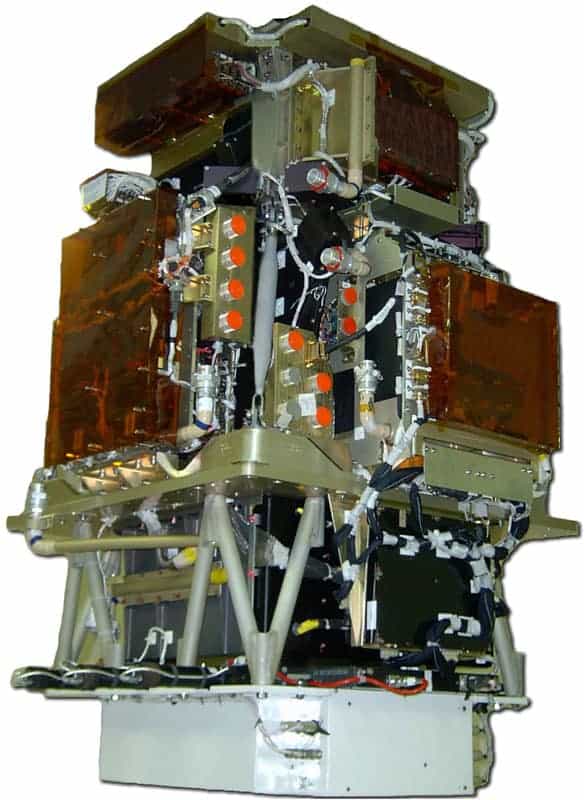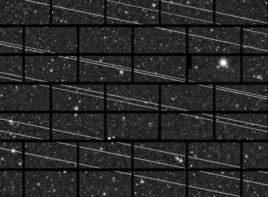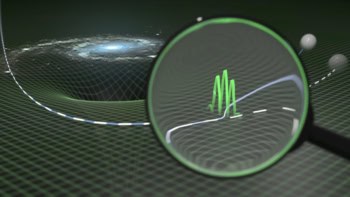
Scientists in the European collaboration PAMELA say they have evidence that challenges the current theory of how cosmic rays are accelerated through the universe.
According to the team, the spectra of protons and helium nuclei passing through the cosmos are not only different from each other, but do not fit a simple “power law” trend thought to describe the relationship between the particles’ abundance and energy. The differences might mean physicists have to search for new explanations of cosmic-ray acceleration.
Cosmic rays are charged particles that rush through space, often at higher energies than those generated by particle accelerators on Earth. The vast majority of cosmic rays are protons and helium nuclei, and are thought to be catapulted forwards by the explosive shock waves of supernovae.
Shock waves
In this mechanism, the shockwaves should accelerate all cosmic rays in the same way, ultimately producing similar spectra that show how the abundance (flux) of the particles decreases with their speed (energy). For a long time, astrophysicists believed this relationship should be described by a simple power law, with flux starting high at low energies and then falling off as the energies get larger – at least up to around 1015 eV (106 GeV), when a “knee” in the spectra brings the flux down more rapidly.
Yet in recent years there have been hints that a single power law is not enough to describe the flux of cosmic rays before the knee. Last year, for example, the balloon-borne experiment CREAM indicated that the proton and helium spectra harden or curve upwards above 200 GeV. ATIC, another balloon experiment, also seemed to find deviations from a power law, although its results weren’t consistent on successive flights.
Now PAMELA has reinforced these findings. A collaboration among scientists in Italy, Germany, Russia and Sweden, PAMELA operates in space where there is little noise from the Earth’s atmosphere, and can detect cosmic rays with energies between 1 GeV and 1 TeV, which other experiments have been unable to do accurately. “What in the other experiments could only be considered a hypothesis, or one possible interpretation, now is a verified fact,” says Piergiogio Picozza of the University of Rome Tor Vergata, a spokesperson for PAMELA.
Different shapes
The PAMELA results reveal two important features. One is that the shape of the proton and helium spectra are different. To quantify this, the researchers fitted a power law to both spectra, and found that the slope of the fit was greater for protons than helium by about 0.1. The other feature is that, for each spectrum, the fit of a power law is generally poor. Between 30 and 230 GeV, the spectra curve downwards (“soften”), away from the fit line, while above 230 GeV they curve upwards (“harden”).
Most experts in cosmic rays contacted by physicsworld.com thought the difference in spectra between protons and helium would not be hard to explain. Mischa Malkov of the University of California in San Diego, for example, suggests that the helium nuclei and protons could just be accelerated in different shock waves. “Stronger shocks would produce harder spectra,” he says. “If the stronger shocks pick up and accelerate more helium than protons, the mixed spectrum will be harder in the helium component.”
However, the deviation of each spectrum from a single power law might prove more tricky for physicists. “The most intriguing evidence in the PAMELA data is the change in the spectral slope around [230 GeV], which breaks the age-old and solid idea that the cosmic-ray spectrum is a straight power law from 1 to around a million GeV,” says Damiano Caprioli of the Arcetri Astrophysical Observatory in Firenze, Italy.
The PAMELA collaboration itself is reluctant suggest explanations. In the meantime, astrophysicists hoping for a clearer picture will have to wait for the Alpha Magnetic Spectrometer, a cosmic-ray experiment that is expected to be fitted to the International Space Station later this year.
The research is published in Science DOI:10.1126/science.1199172.



